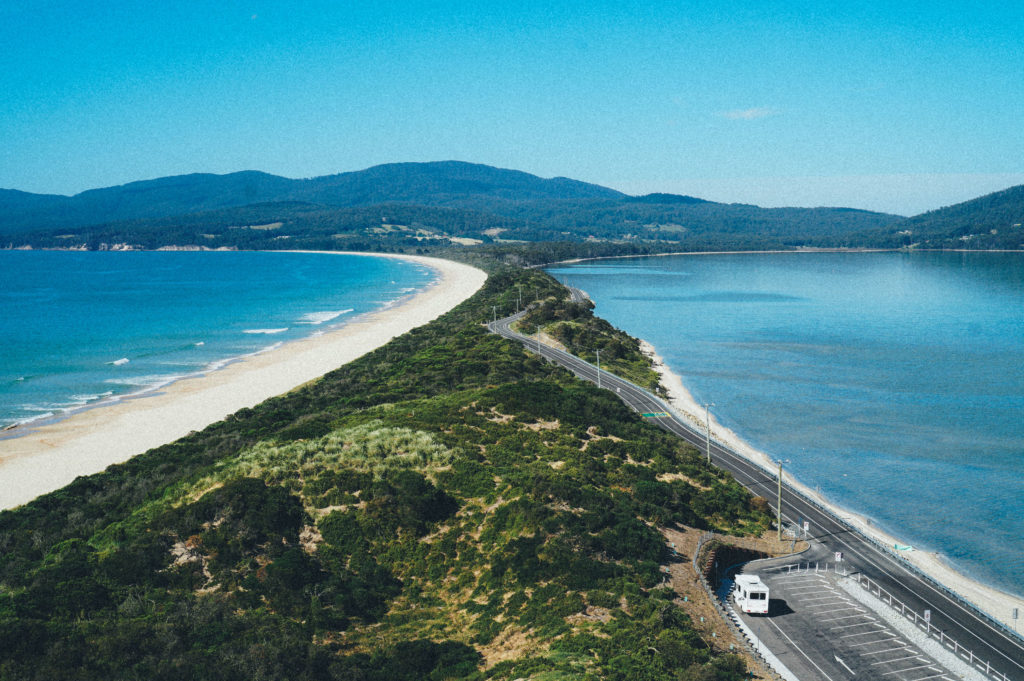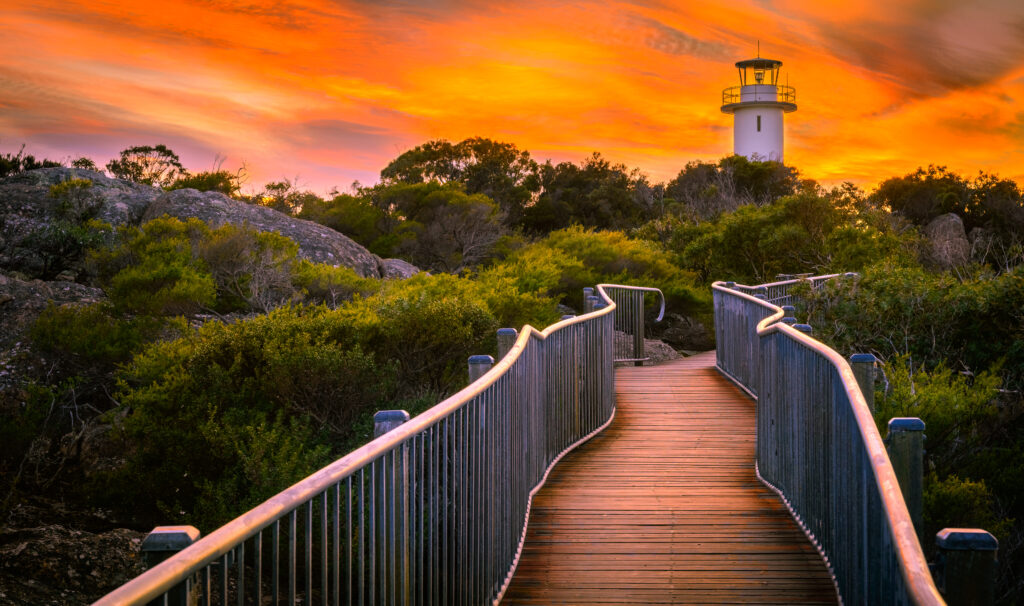Artists, musicians, nature-lovers and those seeking a relaxed pace flock to Tasmania – but is it the right place for you to live and study in Australia? With an attractive cost of living, low crime rate, bustling cultural scene and endless adventures to be had, we certainly think so. Read on to decide for yourself!
Where is Tasmania?
Tasmania, affectionately known as ‘Tas’ or ‘Tassie’, is the southernmost state in Australia. The small island lies 240km south of the Australian mainland, and was home to approximately 540,000 people as of March 2020. Close to 40 per cent of the population lives in or around Hobart, the state’s capital city. Roughly 40 per cent of the island is covered by national parks and World Heritage sites, providing endless opportunities to explore beautiful, bountiful wilderness.
How can I get to Tasmania?
Most national and international flights to Tasmania land in Hobart Airport. There are also multiple daily arrivals and departures to and from Sydney, Melbourne, and Brisbane at Launceston, Devonport and Burnie (Wynyard) airports.
What is the international student population in Tasmania?
In 2019, there were over 15,000 international students enrolled in Tasmanian educational institutions. Most were studying at university, although there were thousands of students taking VET courses and hundreds more at ELICOS providers and schools.
Is it easy to find employment in Tasmania?
On a student visa, you are entitled to work up to a maximum of 40 hours per fortnight. Your university or education provider should be your first port of call when you start your job search; they will most likely have a dedicated web page to help you find work in Tasmania. You can also find local jobs advertised in the Saturday newspaper, or online at Seek or CareerOne.
Seasonal fruit-picking jobs can be a great option for international students in Tasmania. The season falls between December and May, whereas student holiday periods fall between December and February. While Hobart does not have much farm work available, there are options that are close enough for a daily commute from Hobart or Launceston.
What is the lifestyle like in Tasmania?
Tasmania is as unique as it is beautiful. International students will no doubt have a different Australian experience than they would living and studying on the mainland. In addition to the cleanest air in the world, you can also expect to enjoy:
- The great outdoors. As you now know, Tasmania is covered by roughly 40 per cent national park and World Heritage area, making it an outdoor explorer’s dream. You might like to try hiking the 880+ walking trails (the most popular include Cradle Mountain, Bay of Fires and Mount Wellington), camping, canyoning, surfing, scuba diving, kayaking, and everything in-between.
- Travel. There are spectacular road trip options throughout the entire island. Best of all, very affordable camping and hostel options are widely available, making travel accessible for budget-conscious students. It is recommended to put aside a full fortnight when travelling Tasmania to ensure you experience all on offer. However, weekends and shorter trips are fine for exploring the main cities and their surrounds during semester.
- Food, wine and whisky. Tasmania is renowned for its artisanal food and drink scene. You will often find yourself eating and drinking at the very place the produce was grown, raised or created! Highlights include freshly shucked oysters and seafood, cheese from Bruny Island, fudge, scallop pies, and international award-winning whisky. Bring your appetite!
- Culture. Artists, writers and musicians flock to Tasmania for its creative and restful atmosphere. As a result, the island has a rich, diverse and alternative culture. A definite highlight is the Museum of Old and New Art (MONA) in Hobart, which has been likened to a “subversive adult Disneyland” for the provocative contemporary art it showcases. The museum also organises the popular winter solstice festival Dark Mofo, which celebrates all things dark and mysterious.
What are the benefits of studying in Tasmania?
- Tasmania is affordable. Using our cost of living calculator, many international students realise that their budget will stretch much further if they choose to live in Tasmania rather than other mainland states.
- Tasmania is very safe. The crime rate in Tasmania is much lower than the Australian average. Locals and visitors agree that the island has a small-town feel with very friendly residents. It is ranked as the safest Australian state for people and properties, so you can feel secure while living and studying in Tasmania.
- Access to regional migration schemes. The Australian Government deems Hobart and the rest of Tasmania a regional area for migration purposes. This means that by graduating from a Tasmanian university, you’ll be eligible for an extra year or two on the Temporary Graduate visa, which allows you to live and work in Tasmania.
Where do students live in Tasmania?
Tasmania’s capital city, Hobart, houses the main campus of UTAS, and is therefore a hub for student living. Sandy Bay is a favourite spot given its close proximity to the city and plentiful share house options. If you weren’t already convinced, here are 10 reasons to live in Hobart. UTAS also offers student accommodation options in Hobart, Launceston, Inveresk and Burnie.
It is important to note that Tasmanian public transport is not as comprehensive as in other mainland states. Students tend to choose homes within walking distance of their university and place of work, or to drive.





